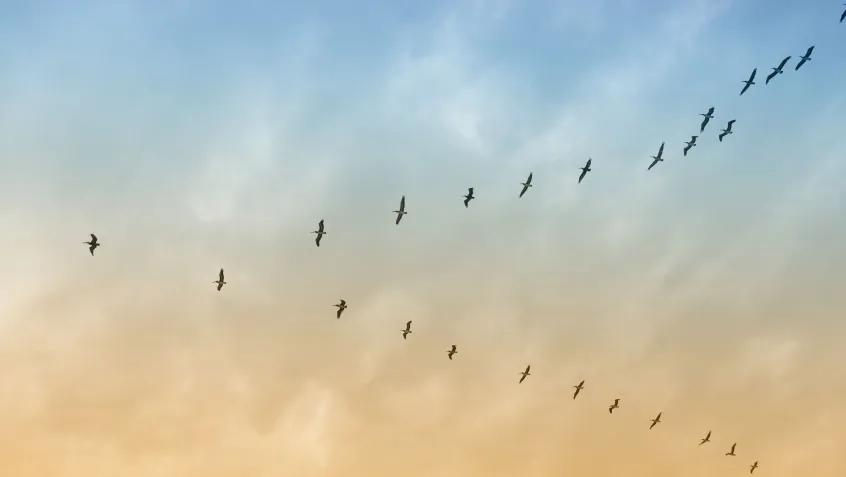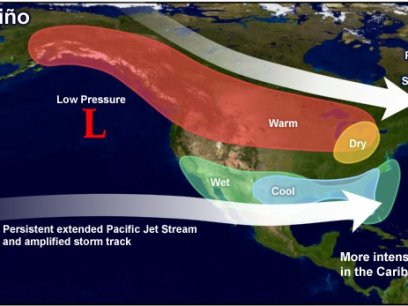
As fall temperatures drop and wind circulation patterns change, your students might notice birds flying south, often in a V-shaped pattern. Tap into this timely learning opportunity to teach them about migration. This natural phenomenon occurs when animals of a single species move a great distance to nest or mate, or as a result of a change in regional temperatures or food availability.
The ideal time for flying typically occurs the day after a cold front passes—northerly winds, sinking temperatures, rising air pressure, and clearing skies pave the airways for good migration conditions.
You can download NEEF’s free Animal Migration Activity Guide to use with elementary-age students that discusses the migration of monarch butterflies, birds, and salmon. Through the guide’s hands-on activities, kids can use STEM skills to explore migration. They’ll plot the coordinates of monarch migration paths to uncover the round-trip flight patterns of four butterflies. They’ll put on their engineering hats to design a bird feeder, which helps provide food for birds on the move. They’ll better understand the phenomenon of animal migration, including why, how, and when certain species migrate. And they’ll use technology to engage in online citizen science projects that help scientists track animals as they undertake large-scale migrations.
For older students, you can find some outstanding migration resources and lesson plans from the National Geographic education website, including videos, lessons, and activities. You can also check out eBird, where students can learn more about migratory birds and weather and look for migrants passing through your area. You can even find three-day migration forecasts at BirdCast to discover when, where, and how far birds will migrate. Powered by the Cornell Lab of Ornithology, BirdCast also shows live migration maps detected by the US weather surveillance radar network, giving students a real-time look at migration traffic.
To extend the lesson, share some school-to-home tips from the Smithsonian’s Migratory Bird Center. Here, you’ll discover simple ways students and their families can help migratory birds—including tips on making their homes and backyards bird-friendly.


